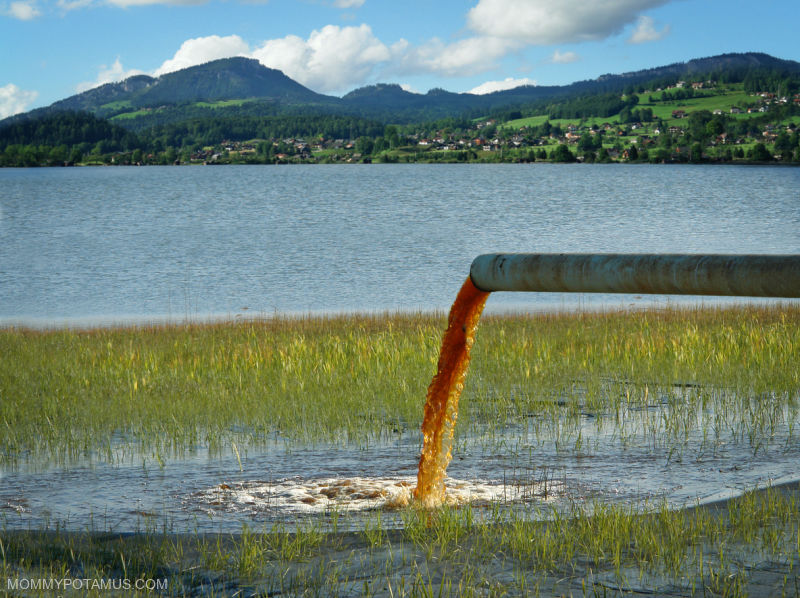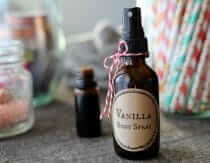
Imagine this: It’s early morning, and you’re rolling your garbage to the curb when the sanitation guy pulls you aside to tell you about a new rule. Digging casually through your trash, he explains that the city doesn’t have enough trucks to pick up 100% of everyone’s trash anymore, so they’re reducing the amount to 90%.
He hands you a smelly hunk from your bag and tells you that you need to dispose of it on your property. You can’t put it in next week’s pickup, and you will have to keep a portion of that trash, too.
As you walk back to the house, eyes watering from the stinky hunk in your hand, you wonder where on earth you are going to store this stuff. That folks, is essentially what modern life is doing to our body’s detoxification processes.
We’ll dive into exactly how those systems are impacted by modern life – plus steps we can take to lighten our load – in this article, but first I want to remind you that none of these statements have been evaluated by the FDA, this article is not medical advice, and it is not meant to diagnose or treat any condition. Please talk with your healthcare provider about what approach to detox support is best for you.
Now that we’ve got that out of the way, let’s dive in.

Is Body Burden Real? (Yes.) ^
Our bodies are absolutely amazing. For example, did you know that a mama and baby can synchronize heartbeats just by smiling at each other, and a similar effect is found in romantic partnerships and friendships, too? (1) (2)
There are so many other intricate ways our bodies interact with loved ones and our environment, too, including our five detoxification pathways and three detox phases.
BUT – those detox systems are facing an unprecedented workload.
Although the human body has an innate capacity to detoxify itself, people now are exposed to a level of consumer, agricultural, and industrial toxins that the human organism never evolved to handle.” – The Toxin Solution (3)
That’s not just one expert’s opinion, either. High levels of cadmium, mercury, lead, plastic residues and other toxins have been found in some of the most remote, “pristine” places in the world . . . but more importantly they’ve been found in us. (4)
Both government and private biomonitoring efforts have found alarming levels of different toxic chemicals in the blood of Americans, even newborn babies. (5) (6) It’s called bioaccumulation, and it’s well-documented by research.
Now, I want to be clear. I don’t live my life in fear of toxins, and I encourage you not to either. However, I do have an educated awareness of them and proactive approach to addressing them. My goal is to share both, so let’s keep going, okay?
What Statistics Can’t Tell Us ^
99 percent of all statistics only tell 49 percent of the story.” – Ron DeLegge II
Did you know that a study out of Harvard found that Americans have collectively forfeited 41 million IQ points as a result of exposure to lead, mercury, and organophosphate pesticides? The cognitive loss is most profound when exposure happens at an early age. (7)
It’s true, but if you’re like me, reading through a long list of statistics about how toxins affect us only offers a limited perspective. With that in mind, let me tell you a story instead:
Once upon a time in 1976, lawmakers passed the Toxic Substances Control Act (TSCA) with the goal of regulating the chemicals used in everyday products and protecting people from toxic exposure.
Except, well, they just assumed the 60,000 chemicals already in use at the time were perfectly safe, so they grandfathered them in without any safety testing. Asbestos was one of the chemicals originally grandfathered in if that gives you any idea how “picky” they were at the time.
That’s why to this day only about 20% of the 80,000 chemicals approved for use have undergone any safety testing at all, and only 50-100 have been closely examined to determine their health effects. (7)(8)
3 Things To Know About Chemical Body Burden ^
Thanks to a 2016 law, the EPA is now required to study the 60,000 chemicals they grandfathered in, plus the roughly 2,000 new ones that get added every year.
Unfortunately, with the timetable they’ve been given it could take them literal centuries to complete their research. (9)
Just like with water filtration, I’m not waiting for the Safe Water Drinking Act (which hasn’t regulated any new chemicals in nearly 20 years) to catch up before I take steps to remove “forever contaminants” like PFAS from my drinking water.
With that in mind, here are three things I’ve learned in my personal mission to reduce my (and my family’s) body burden.
1. Detox Depletes (So We Need To Replenish Often) ^
Sometimes I’ll get a question that goes something like, “Hey, you’re always mentioning how this herb or that spice supports detox. If so many different plants and foods help with detox shouldn’t we be covered if we just eat well?”
I certainly thought so, but when I began my journey of recovery from Lyme disease and black mold exposure I found that my healthy diet (at least by most people’s standards) had some gaps I wasn’t aware of.
Detoxification is heavily dependent on a steady supply of nutrients including minerals, vitamins, and antioxidants.
For example, our bodies rely on minerals to make the enzymes needed to break toxins down. Unfortunately, due to soil depletion, we’re not getting the rich assortment of minerals in our diet that we used to. (10)
Even if we are getting tons of one or two minerals – magnesium and zinc for example – our bodies can only make a fraction of the enzymes needed to detoxify effectively. We need a full range of beneficial minerals to make toxin-specific enzymes.
Oh, and the first phase of liver detoxification generates a lot of free radicals, so we need a constant supply of antioxidants to counteract them.
There isn’t one antioxidant that counteracts every type of free radical, though. Glutathione neutralizes the hydroxyl radical, vitamin E neutralizes the peroxyl radical, and so on. (11) (12)
That’s why simple consuming a lot of one type – vitamin C, for example – isn’t necessarily the way to go. (And fun fact, our bodies can’t make or store vitamin C so we need to take small amounts often instead of large amounts less often to get the most benefit.) (13)
Bottom Line: Detoxification is a nutrient-intensive process, and when we consume a wide range of antioxidants, vitamins, minerals, and other compounds that support detox, we increase the chances that our bodies will have the “right ingredients” on hand to deal with whatever comes our way.
2. Our Liver Detox Capacity Can Vary By 1000% ^
“Well, I was exposed to _________ and I’m okay” might be one of the most frustrating things we hear when we’re trying to explain our effort to make healthier food and lifestyle choices. It may seem like those statements invalidate the importance of our efforts, but they don’t.
Here’s why:
- People often don’t make the connection between previous toxic exposures and negative effects unless they happen immediately, but sometimes the effects don’t show up until years later. (14)
- Some of our internal garbage services are faster than others, with bigger trucks and more pickup times. According to Joseph Pizzorno, ND, our capacity to make enzymes needed for detoxification can vary by as much as tenfold for Phase II and a thousandfold for Phase I. (3) (If you have no idea what Phase I and Phase II detox are, check out this article.)
Some genes that play a role in our individual detoxification capacity are CYP450, MTHFR, MTRR, CBS, GST, Nrf2 and SOD among others.
With that said, having a mutation along one of these pathways does not necessarily indicate poor detox capacity. It often comes down to how well we make the particular enzymes needed to break down the toxins that are impacting us most. (3)
Oh, and there are ways to help optimize the function of these enzymes. For example, broccoli sprouts contain sulforaphane, which is the most powerful activator of the Nrf2 gene pathway that we know of.
The Nrf2 pathway controls over 200 genes that play a huge role in detoxification, antioxidant protection, and cellular resilience and has been called a “Guardian of Healthspan” and “longevity pathway.”
What I love about the research on activating Nrf2 is that we’re not talking about some super expensive protocol that can support detox here. We’re talking about broccoli sprouts, which are both affordable and easy to grow. (There are supplements that contain sulforaphane if you’d rather not cultivate them, though.)
3. Little Amounts Add Up ^
We’re often told that it’s “just a bit of paraben” in our shampoo and “just a little lead” in our water, but actually it’s those plus a little:
- Inhaled VOCs from our furniture and building materials (Inhaled toxins can go straight to our bloodstream)
- Phthalates from the plastic wrap our meat came packaged in
- Heavy metals and PFAS (one of the “forever chemicals”) hidden in some “healthy” cookware
- Flame retardants in children’s clothing, toys, and blankets
- Mycotoxins from water-damaged buildings where we live, work, learn and play
. . . and so much more.
And while while almost no safety testing has been done on most of these chemicals, the little that has been done mostly focused on the effect of one chemical at high doses. Turns out, the effect of multiple chemicals together at low doses is often more problematic.
Almost all the studies focus on high levels of exposure, with little research on low- and medium-level exposure over a long period of time. The good news is that this latter research is finally being done. The bad news is that what is being found is far worse than most anyone expected.” (3)
According to Dr. Joseph Pizzorno, ND, author of The Toxin Solution, there are many different ways this constant exposure to toxins can damage our bodies:
- They damage our internal enzyme engines, which support countless vital body functions. When enzymes fail, it can lead to problems like inhibited production of hemoglobin in the blood and decreased ability to counteract free radical damage (leading to accelerated aging).
- They displace structural minerals. For example, if we’re exposed to lead as children it will often migrate to our bones and take the place of calcium. Then, when we get older and start experiencing bone loss, some of that lead gets re-released back into our bloodstream. (15)
- They damage organs and systems, including the liver, brain, nervous system, kidneys and digestive system. Many chemicals are also linked to functional problems like attention and behavioral issues.
- They damage DNA, “which increases the rate of aging and degeneration. Many commonly used pesticides, phthalates, improperly detoxified estrogens, and products containing benzene damage DNA.” (3)
- They change gene expression. We used to think the genes we pass on to our children are unchangeable, like the keys on a piano. While that’s true, the keys can be damaged (DNA damage). Also, pianos don’t play themselves, and neither do our genes. External factors like our diet, sleep quality, stress levels and toxic exposure influence which genes turn on and off – essentially determining what kind of “music” they play. Toxic exposure tends to have a negative effect on gene expression, and the epigenetic changes are often passed down to children.
- They interfere with hormones. For example, “PCBs inhibit the production of thyroid hormones, so people with elevated PCB levels feel fatigued all the time.” (3)
- Toxins damage cell membranes, which impairs each cells ability to “talk.” According to Pizzorno, “Damage to these membranes prevents them from getting important messages—insulin not signaling the cells to absorb more sugar, for example, or muscle cells not responding to the message from magnesium to relax.” (3
Ironically, excessive toxic exposure can actually decrease our detoxification capacity. In other words, exposure to certain kinds of toxins damages the mechanisms we need to get rid of them.
Fortunately there is GOOD NEWS, too.
It Really Is Possible To Reduce Your Chemical Body Burden ^
Maybe you’ve read about the Dirty Dozen and Clean Fifteen – which is the Environmental Working Group’s list of fruits and veggies that are most/least likely to be coated in pesticide residue – and wondered if trying to avoid everyday toxins really makes that much of a difference.
A Swedish grocery chain partnered with the Swedish Environmental Research Institute to answer that question – here’s what they found:
During the first week of the 21-day experiment, the Palmberg family ate a conventional diet and then each member submitted a urine sample to the SERI laboratory, where analysts found a number of insecticides, fungicides and plant growth regulators. Then, the family switched to an organics only diet, including soaps and personal care items, for two weeks. During the organics phase, the researchers took daily urine samples.
The results were dramatic: The pesticide loads in the family members’ bodies dropped in ways that were observable after a single day, according to the report. And by the end of the two weeks, there was very little evidence of the pesticides and other compounds in their follow up urine samples.”
In other words, taking steps to reduce toxic load by doing things like:
- Buying organic food when possible (Here are some tips for eating healthy on a budget)
- Using natural personal care products and cleaning supplies
- Drinking clean, filtered water (shower filters are helpful, too)
- Removing VOCs, mold spores and more from the air with an air filter
. . . . really do make a significant, measurable difference. However, while “blood levels of many toxins can decrease quickly, it takes much, much longer to clear out the cell, bone, and fat stores.” (3)
Fortunately, in addition to reducing our daily body burden, there are ways to support our detox pathways so that our bodies can safely eliminate toxins we have accumulated over time.
In an upcoming article I’ll lay out the strategies shared with me by my functional medicine MD along with tips I’ve learned from other doctors, herbalists and practitioners.
In the meantime, here are some related articles for those of you who like to take deep dives into subjects:
- How Our Bodies Detox
- How To Support Liver Health for Detox
- DIY Liver Love Detox Support Tincture Recipe
Want more research-backed natural remedies?
No problem, I’ve created a free ebook for you – Kitchen Apothecary: 25+ Natural Remedies Using Ingredients From Your Pantry – as a gift for signing up for my newsletter. You’ll also get updates when I post about safe essential oils for pregnant/breastfeeding mamas, exclusive gifts and coupons (I was able to give away a jar of free coconut oil to anyone who wanted it recently!), plus other goodies.
Sign up using the form below.
Sources
1. UC Davis (2013) Lovers’ hearts beat in sync, UC Davis study says
2. National Geographic (2011) Your Heart Can Sync With a Loved One’s
3. Pizzorno, Joseph (2017) The Toxin Solution: How Hidden Poisons in the Air, Water, Food, and Products We Use Are Destroying Our Health–And What We Can Do To Fix It
4. BBC (2018) Why pristine lakes are filled with toxins
5. Environmental Working Group (2005) Body Burden: The Pollution in Newborns
6. Centers for Disease Control and Prevention (CDC) National Report on Human Exposure to Environmental Chemicals
7. The Atlantic (2014) The Toxins That Threaten Our Brains
8. The Guardian (2019) Is modern life poisoning me? I took the tests to find out
9. PBS (2016) It could take centuries for EPA to test all the unregulated chemicals under a new landmark bill
10. Scientific American (2011) Dirt Poor: Have Fruits and Vegetables Become Less Nutritious?
11. Fiser, Bela et. al. (2013) Glutathione – Hydroxyl Radical Interaction: A Theoretical Study on Radical Recognition Process
12. Maret G. Trabera and Jan F. Stevens (2011) Vitamins C and E: Beneficial effects from a mechanistic perspective
13. Victoria State Department of Health. Vitamin C
14. New York State Department of Health. What You Know Can Help You – An Introduction to Toxic Substances
15. Harvard School of Public Health. High levels of lead in bone associated with increased risk of death from cardiovascular disease in men




